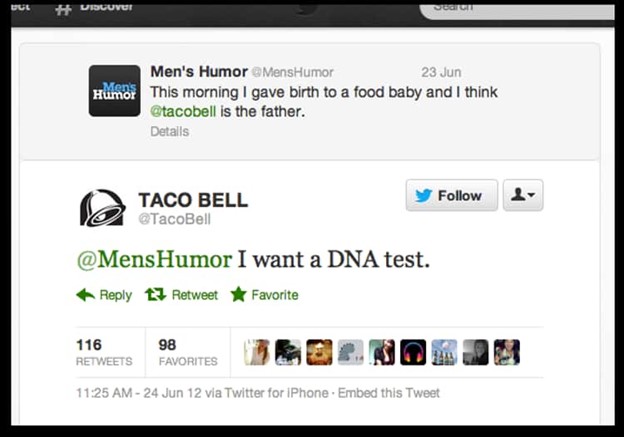by Team Avista
Share
by Team Avista
Share

A recognizable brand can make a significant difference in the overall performance of an organization. That’s why Exploding Topics reported that over 10,000 branding and positioning agencies exist worldwide.
How you create and implement your brand comes down to brand messaging and identity. When done correctly, these two aspects of branding will help employees work together to stay on-brand and win the trust of your customers.
With 81% of consumers saying they need to trust a brand before making a purchase, building trust is vital for your company’s future.
What is a Brand Message?
A strong brand message conveys the brand’s value to its target audience and the why behind its actions. To create a brand message, you need a message framework.
Brand Message Framework
A brand message framework helps pin down objectives and finetune the message you want others to receive when they see, hear or think about your brand. To create a message framework, you need to focus on four things.
1. Figure Out Who You Are
The who you are section of your brand message framework is the answer to why your audience should care about your brand. At this stage, you need to determine how you’re different from competitors, your value proposition, who your audience is, what messaging resonates with them, the story you want your brand to tell, and company goals and values.
2. Know Your Audience
Once you have determined your audience, it’s time to find what makes them tick. A buyer persona is a great place to start defining the behaviors and goals of your customers. You can use data from marketing campaigns, social media, and website analytics to determine the audiences that your product speaks to and the why behind their purchasing behavior.
3. Determine How Your Brand Relates to Your Audience
After determining your buyer persona, it’s time to ensure your brand will resonate with them. In this part of the message framework, you need to decide where your brand values and goals align with your target audience.
4. Brainstorm Messaging Opportunities
Lastly, you need to brainstorm how you will align everything your organization does with your brand message. Every interaction with your buyers, employees, and stakeholders should point to the same message. Aligning your brand message with its actions will reduce confusion about your brand and its position.
Types of Brand Messages
When coming up with a brand message, it’s important to remember that there are two different brand messages you need to hash out and align with each other for success within a brand. These include internal and external brand messages.
Internal Messaging
Internal messaging is the message you want to promote to your team or staff. It motivates employees to keep working for your organization and aligns their actions with the external message.
External Messaging
External messaging is your marketing message. It should be a benefit-based statement that shows potential clients, investors, and employees your organization’s usefulness to them.
Brand Message Example: Taco Bell
Taco Bell’s brand message is strong and funny. Their goal is to be relatable so customers enjoy talking about their brand. They interact with customers with emojis and witty comebacks, which aligns with this message.
The Importance Of Brand Identity: The Brand Mascot
Brand messaging goes hand-in-hand with your brand identity because once you choose your brand message, your brand identity should be easy to determine. Brand identity comprises all the visible elements of a brand, which includes everything from company colors and design to the logo, website and social media accounts. A good brand identity will identify and distinguish your brand from others, just like Eagle’s sales enablement strategy did through their brand transformation.
Informs Your Company’s Behavior
Aligning your image with your message informs company behavior. Elements like the font and color of your logo, website, and ads communicate messages to your customers and employees. Your job is to ensure your brand identity communicates the message you want.

A well-done brand identity will align design elements with the answers to the following three questions.
- Why does your brand matter?
- What does the brand stand for?
- What makes it different?
How to Form a Strong Brand Identity
To create a brand identity that resonates with your customers, you need to know who you are as a brand and what design elements mesh with your messaging. Avista helped AJO do this during its brand refresh.
Know Who You Are
Knowing who you are as a brand means having a mission, values, a brand personality, unique positioning and a brand voice figured out. If you’ve figured out your brand messaging first, this is a lot easier to nail down.
Design Elements
Design elements need to be cohesive, which means everything from typography and colors to form and shape needs to be predetermined and made standard throughout the company. These design elements will inform your logo, website, product packaging, advertisements, email design, and so much more. This is why it’s important to create a brand style guide once you have determined which design elements align with your brand messaging.
Brand Identity Example: Coca-Cola
One example of a strong brand identity is Coca-Cola. Many can picture the Coca-Cola font and bright red circle just by hearing the brand’s name.

The first component of Coca-Cola’s brand identity includes the color red, which elicits confidence in the person drinking the Coke and the script typeface, which communicates enjoyment.
The second component of Coca-Cola’s brand identity is the unique shape of its bottles. Because the bottle shape is different, it develops credibility and trust with the customer. When it comes in the Coke bottle, it somehow tastes different and communicates to the customer that they have the real thing.
How Avista Can Help Your Brand
Avista helps customers seize and cultivate growth opportunities with branding and messaging. We can help you build and express your brand messaging and identity with brand discovery and audits, brand positioning and message architecture, naming strategies, storyboarding, brand identity and expression, and brand analytics and assessments.
Related Posts:
STAY IN THE LOOP






